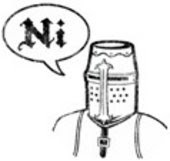But its like those guys on TV say, past performance is no guarantee on future returns.
In order to understand what went wrong in the US nuclear industry, you really have to take a look at the past to see how some of the conditions that made them as expensive to build as they were no longer exist.
Back in the day, every utility in the country functioned as a regulated monopoly. The utility had every major decision ran past a regulatory body that would either approve or reject the decision as well as tell the utility how much more it could charge for its power. While this meant that reliable power was available to nearly everyone who needed it or wanted it, it removed any kinds of incentives for efficiency or risk management on the utilities end because every capital infrastructure request made by a utility was approved and the regulators gave the utility permission to increase their prices to cover the construction costs, including cost overruns. This increase also included the utilities predetermined profit rate. Even if they made a mistake, they still profited off of it.
Management did not have a good understanding of what they were getting themselves into when thy initially went seeking approval for the plants. They were basing their budgetary estimates off of a scope of work that was 20-25% defined because they were rushing themselves to get these projects up and running and did not fully appreciate the risks involved in this kind of heavily regulated work.
Think about that for a moment …. only 20-25% of the project could be categorized as a “known”. That means any contractor bidding on it knows with certainty only ¼ of his scope, and he is then expected to provide a fixed price bid for the entire project .. doesn’t work like that.
And since only 25% of the scope was defined that meant only 25% of the engineering was complete, so all permitting for the plant had to be done on an incomplete design, and regulators at the NRC didn’t care for that either.
On a project like this you perform detailed engineering, seek permits, take bids, procure, construct and operate. When the big nuclear projects of the 70’s were in full swing, utilities were half assing this creed of good project management, hoping that things would just work themselves out but also not caring too much if they didn’t because there was no real financial risk.
So when work began on the plants and engineering tried to catch up, the NRC would invariably reject part of the design (because naturally it would make too much God damn sense to have a standardized pre-approved design instead of reinventing the wheel every project). The design would then have to go back to engineering; subcontractors would have to stop what they were working on, idling hundreds of tradesmen or worse reworking what they had done. Delays would ensue, schedules would slip and the project’s margin sheet would begin to bleed like a stuck pig.
Do this 70 or 100 times during the course of a project and its no wonder why costs spiral out of control and 4 years projects turn into 20 year projects.
Sure, the ever changing NRC rules and the Ralph Nader’s and Jane Fonda’s of the world certainly didn’t help, but all the missteps the utilities were making made them more vulnerable in the courts and with the regulators.
So what is different now?
Well, for one, manufacturers (Westinghouse and GE-Hitachi for example) are pushing for standardized packages that once given NRC approval would take the permitting issue out of the equation.
Utilities now have to go onto the market and get funds the old fashioned way and private investors have to weigh the ability of the utilities to control costs, meaning you damn well have better know what you are doing before we lend you billions of dollars.
Material and labor costs are at the lowest they have been in over a decade. High material and labor costs was actually a reason that asshole extraordinaire Joe Romm said that nuclear was doomed for a comeback:
In fact, from 2000 through October 2007, nuclear power plant construction costs -- mainly materials, labor and engineering -- have gone up 185 percent! That means a nuclear power plant that would have cost $4 billion to build in 2000 would have cost more than $11 billion to build last October.
Looks like his ability to predict the future isn’t quite as good as he would like the rest of us to believe it is.
Most importantly though public sentiment is now behind nuclear power.
If the utilities and their subcontractors can demonstrate the ability to manage a project well, nuclear will see a revival.



No comments:
Post a Comment